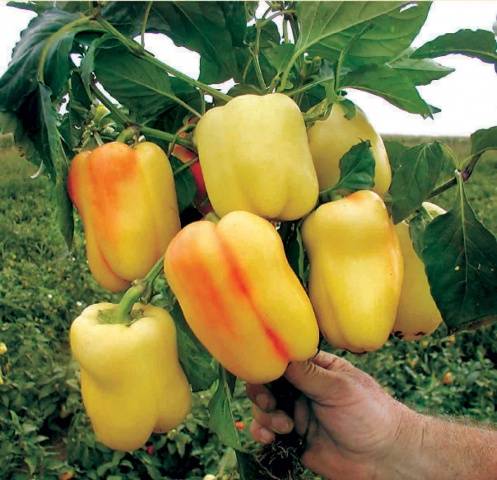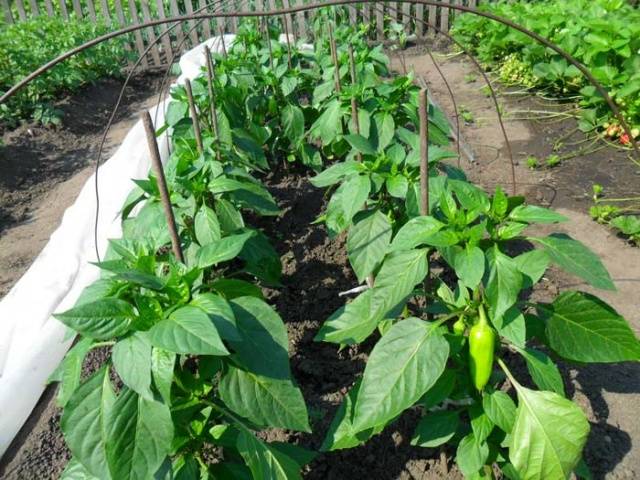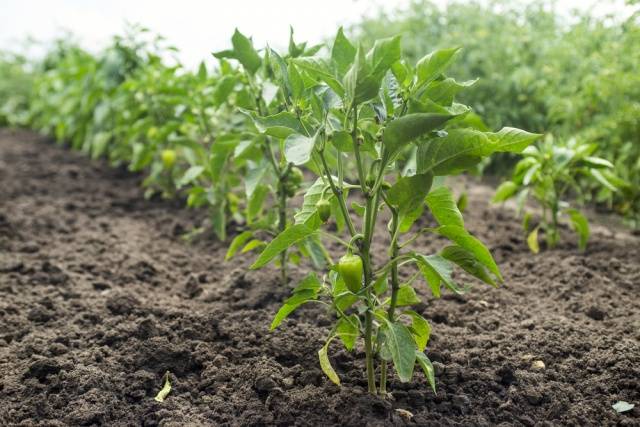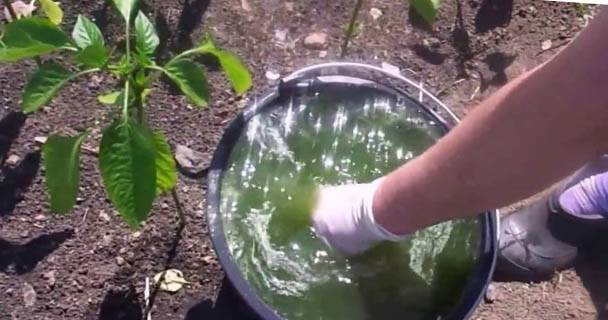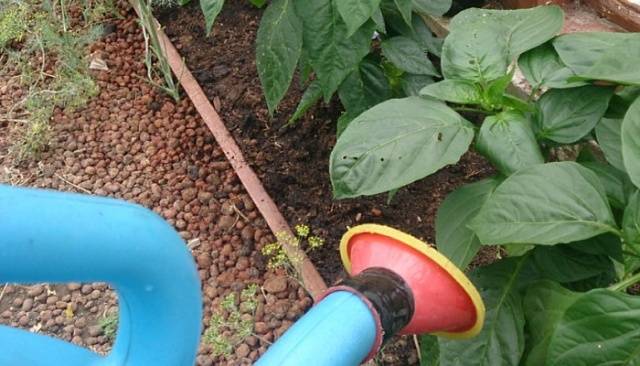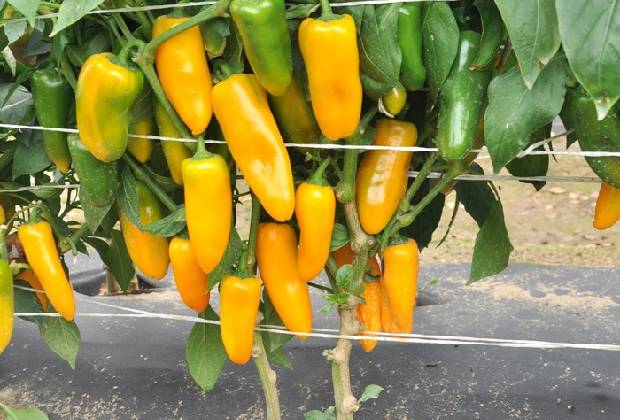Content
Pepper is traditionally considered not the easiest crop to grow, although this opinion was formed mainly due to its relative thermophilicity. Adult pepper plants are quite resistant to low temperatures, but young ones really need at least + 18 ° C for good growth and development; at lower temperatures, plant development stops. At the same time, peppers tolerate heat well, which is why the culture is quite common in the southern regions of Russia. Nonetheless in greenhouses and film tunnels, peppers can be grown in almost all areas up to the very north. But with any growing method, you always want the fruits to be really large and sweet. Therefore, you cannot do without feeding the peppers, especially if the soil is not the most fertile.
When you need top dressing
The fruiting period is the final one in the cultivation of peppers and, of course, the most important and responsible for the gardener. Almost everything that could be done has already been done and all that remains is to wait for a good harvest.
But pepper is a rather demanding crop in terms of nutrition, and if you plant them in an ordinary soil that has not been fertilized with anything previously, then fertilizing with such a cultivation comes to the fore. Therefore, it is safer to take care of the composition of the soil in the beds in advance, where you are going to grow pepper. The best place for pepper beds is in former compost heaps. If they are already occupied, or their number is not enough, then it is necessary to add at least a bucket of compost for each square meter of ridges, before planting pepper seedlings on them.
If we assume that this has not been done, then the pepper needs regular feeding with organic and mineral fertilizers every two weeks. But by the time the first fruit ovaries appear, you need to be extremely careful. The use of mineral fertilizers is undesirable, since there is a high risk that they will accumulate in ripening fruits. Nevertheless, if the peppers are greatly delayed in growth, there is a clear slowdown in the development of fruits, and spots of different intensity and color appear on the leaves, then feeding them, of course, is necessary.
Signs of nutritional deficiencies
It is not always easy to determine what the peppers lack for the ripening of a normal harvest, especially since sometimes some nutrients are present, on the contrary, in excess.
- Lack of nitrogen always manifests itself in the clarification of the leaf blades, and the clarification affects the entire surface of the leaf together with the veins and begins, most often, from the lower leaves. But nitrogen, as a rule, is no longer needed by pepper during the fruiting period. An excess of this element is much more common, which leads, first of all, to the impossibility of assimilation by pepper of such an important element as calcium, which is responsible for carbohydrate metabolism. This means that many other elements also begin to be absorbed poorly.
- Due to the lack of phosphorus, old leaves acquire a bluish-brownish tint and, when dried, turn black.... Usually, at the fruiting stage, a lack of phosphorus is rarely observed, but it can happen after the first wave of recoil, when the pepper bushes are in no hurry to bloom again. Excess phosphorus is very rare.
- Lack of potassium usually manifests itself in the budding stage., but it can appear, as well as a lack of phosphorus, after the ripening of the first wave of pepper fruits. The leaves curl around the edges, and a light border appears on them. In the future, browning and dying off of the tips occurs. An excess of potassium, as well as nitrogen, leads, first of all, to the non-assimilation of many other elements: calcium, boron, zinc, magnesium.
- The lack of calcium is indicated by young leaves of peppers, which curl, turn pale and die off.... The apical buds of the shoots are also damaged.
- The lack of magnesium and molybdenum manifests itself mainly on acidic soils, while the deficiencies of boron, iron and manganese intensify in alkaline soils, where excessive amounts of nitrogen and lime have been introduced.
Fertilizing necessary during fruiting
Summing up all of the above, it can be noted that regardless of the feeding operations carried out in previous periods, pepper bushes need complex feeding at the moment when the first fruits have reached a state of technical maturity.
In order for them to acquire the saturation of the shades they were supposed to be according to varietal characteristics, as well as in order to continue to lay and ripen new fruit ovaries, pepper bushes need additional feeding.
In this case, there are several options to choose from.
Option 1
Top dressing is prepared from weeds growing on your site: dandelion, clover, nettle, coltsfoot, wheatgrass and many others. Fill any metal or plastic container by ¾ of the volume with all of the above herbs and fill it with water. You can also add one liter can of wood ash to the container for 10 liters of liquid. All this is covered with a lid and infused for 7-9 days. One liter of the resulting liquid is diluted in a 10-liter watering can and with this infusion the pepper plants are watered instead of water.
Option 2
This feeding option can be prepared from a mixture of potassium and phosphorus fertilizers in combination with a full set of trace elements, preferably in a chelated form. For 10 liters of water, you need to take one tablespoon of superphosphate and one teaspoon of potassium sulfate, as well as one tablespoon of any set of trace elements. The consumption of fertilizer liquid when feeding pepper bushes is about one liter per plant.
Option 3
It is the simplest, but no less effective way of feeding than the previous two. It is necessary to buy potassium humate in a special store, preferably with a set of trace elements. It is usually sold in small sachets, weighing about 10 grams. This is a completely organic fertilizer, which, in addition to the feeding effect, has an additional stimulating effect and improves the properties of the soil. One sachet is diluted in 200 liters of water and the peppers are poured under the root with the resulting solution.
Perhaps the peppers will no longer need any other help.
Feeding rules
It is better to carry out feeding procedures in the morning, so that all the moisture on the leaves and the soil surface from the fertilizer solution has time to completely go away by the evening temperature drop.
The soil must be moist before feeding. Therefore, abundant watering is a necessary procedure before feeding the peppers.
Some time after watering, it is advisable to slightly loosen the soil surface to provide oxygen to the roots of the pepper.
Using folk remedies
Since everything that you will feed the pepper during the fruiting period will certainly affect the internal composition of its fruits, and also the taste characteristics, many people prefer to use exclusively folk remedies during this period that can quite effectively replace traditional mineral dressings.
For example, dried and crushed banana skins are high in potassium. They can be used together with wood ash instead of any potash fertilizer. In addition, ash also contains a certain amount of phosphorus.
Many beneficial trace elements are found in milk and dairy products, such as whey. If you dilute one liter of any dairy product in 10 liters of water and add 15-20 drops of iodine, you can get an excellent top dressing for peppers, which also has a protective effect against pests and fungal diseases.
Finally, it is during the fruiting period that feeding peppers yeast. To do this, it is enough to dilute 10 grams of dry yeast in 10 liters of water, add 2 tablespoons of sugar and leave for several hours. It is necessary to add several handfuls of wood ash to the infusion, since yeast has the property of "eating" potassium and calcium from the soil. The resulting solution is diluted in a 1: 5 ratio and the peppers are poured over it instead of regular water.
Conclusion
As you can see, there are many ways to feed peppers during fruiting and get an excellent harvest, which will still differ in amazing taste and usefulness.
